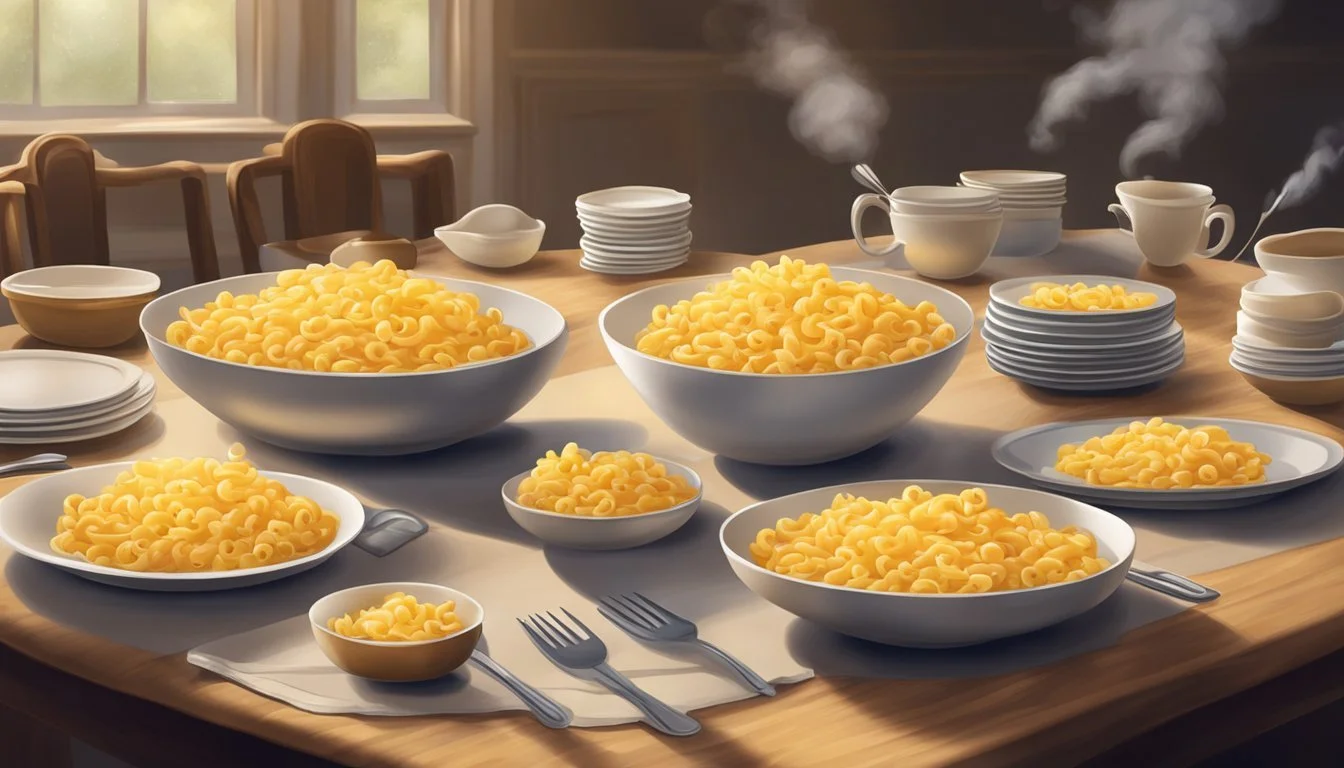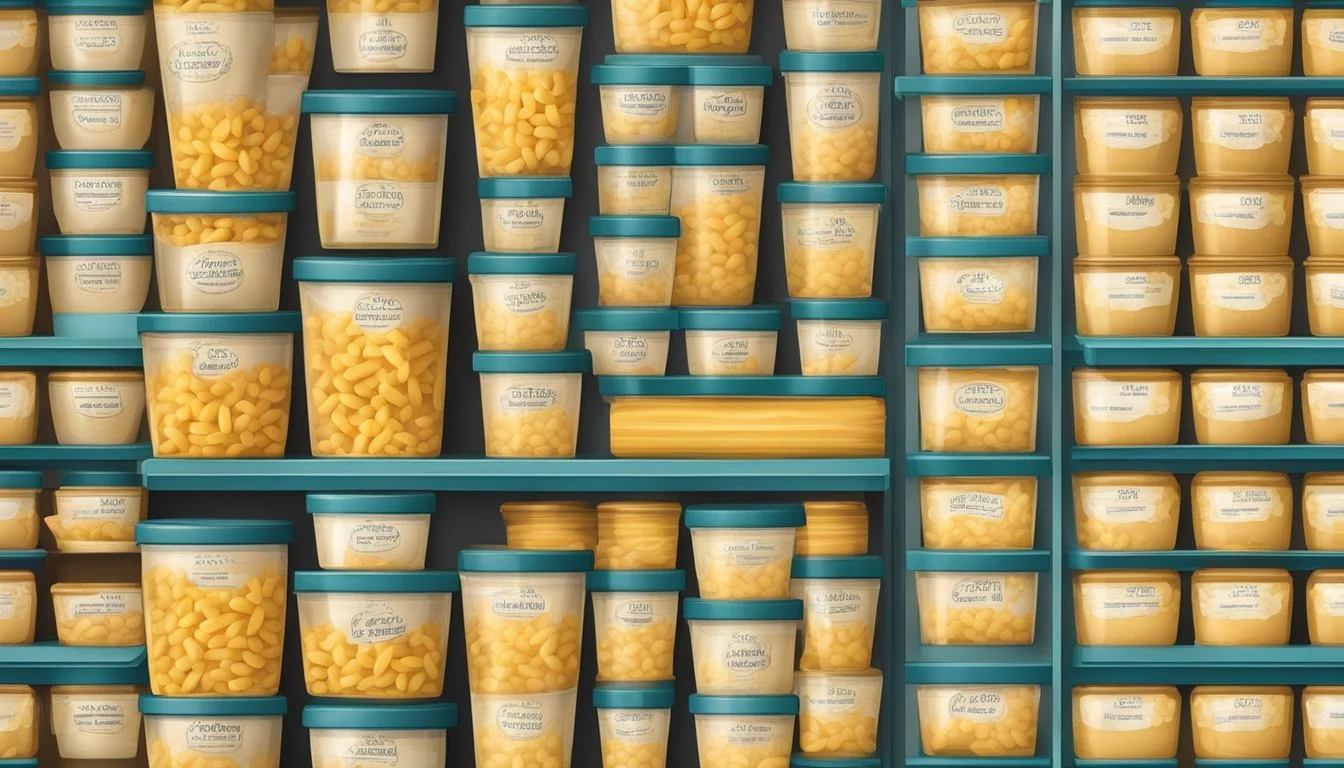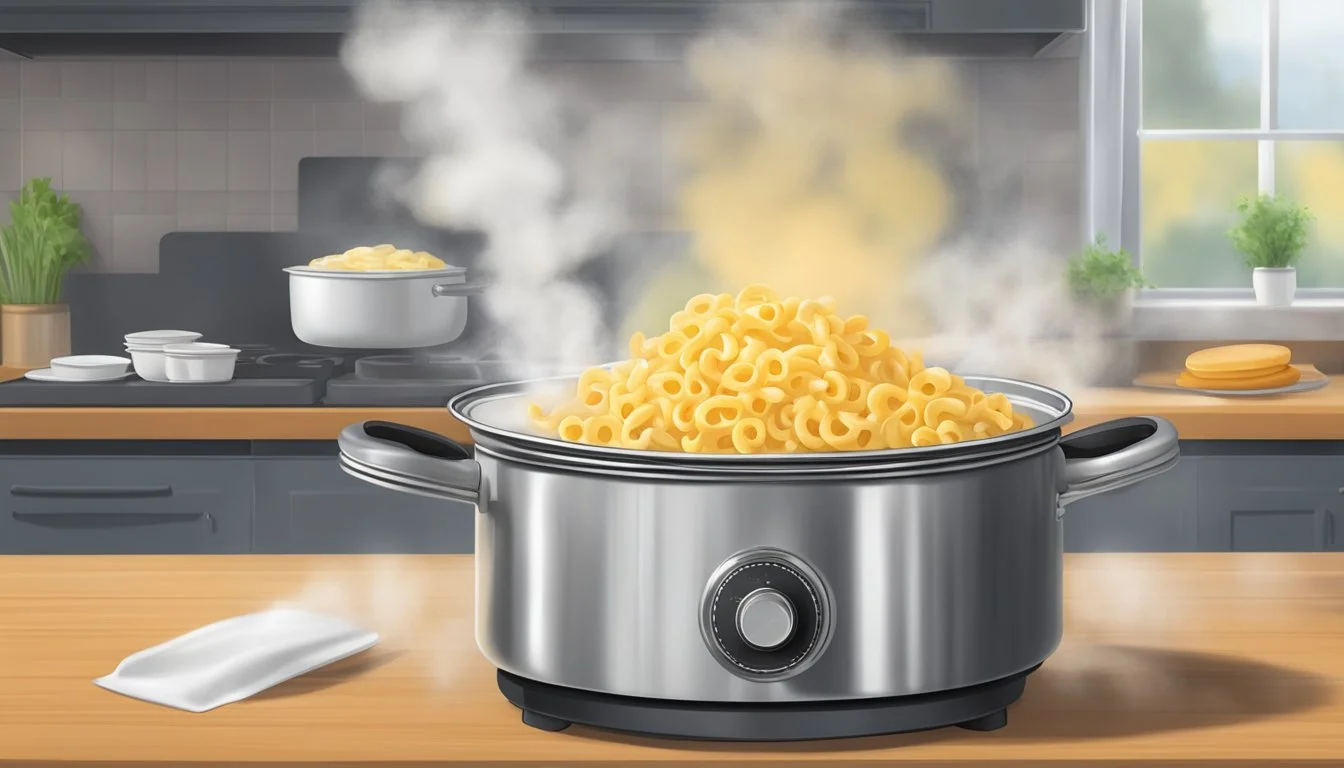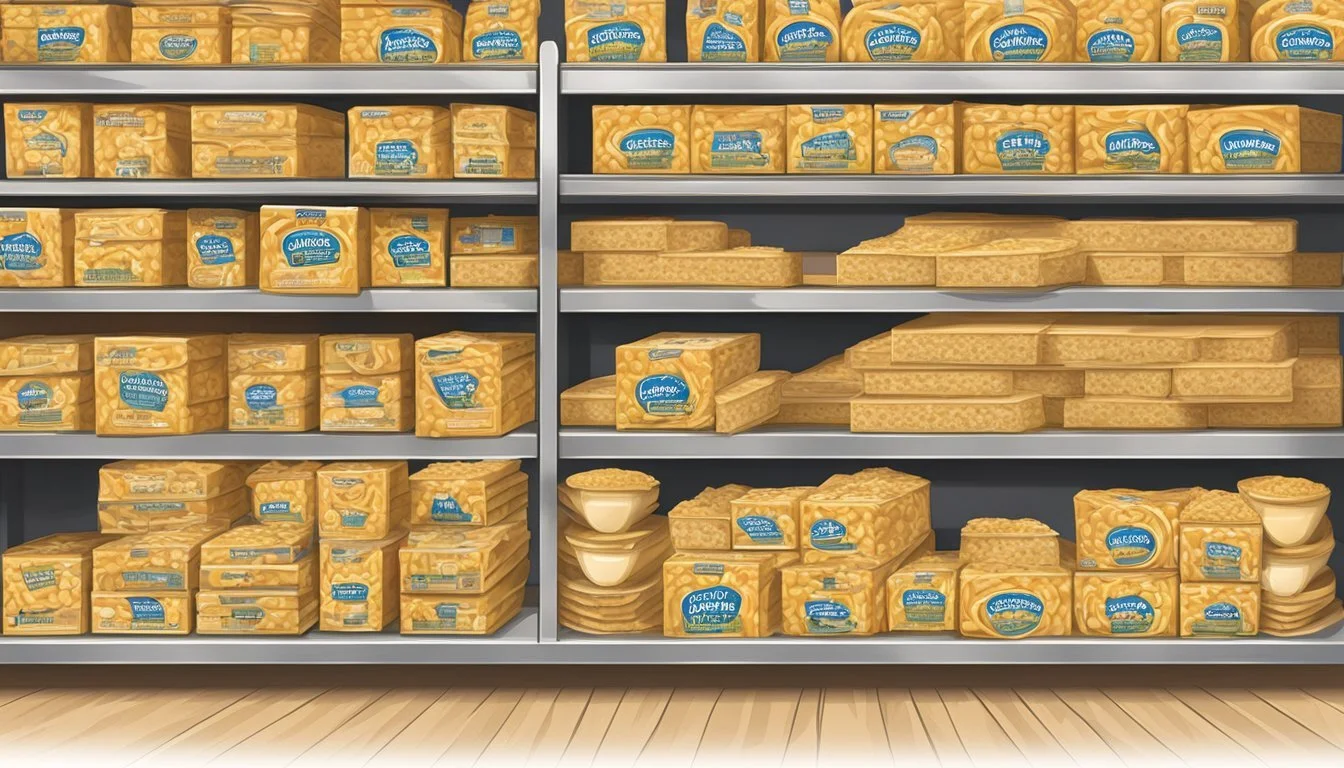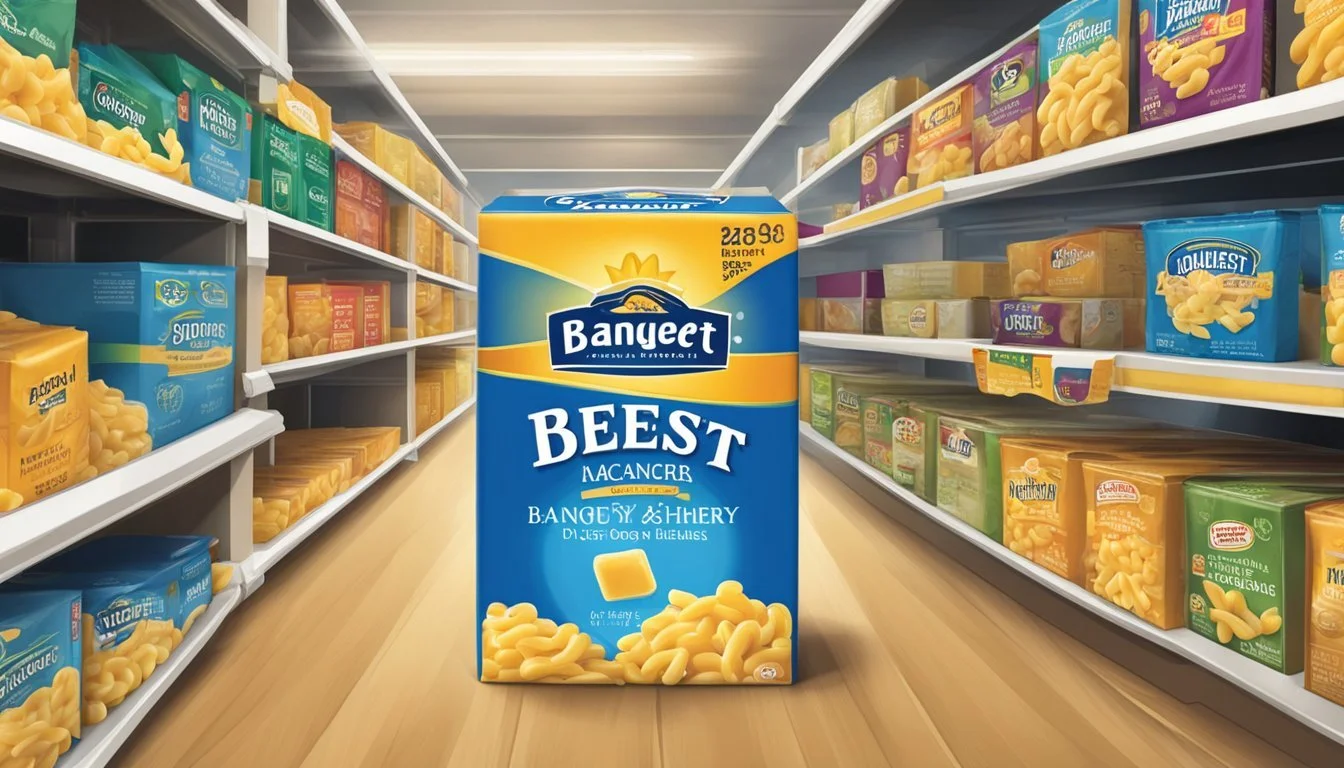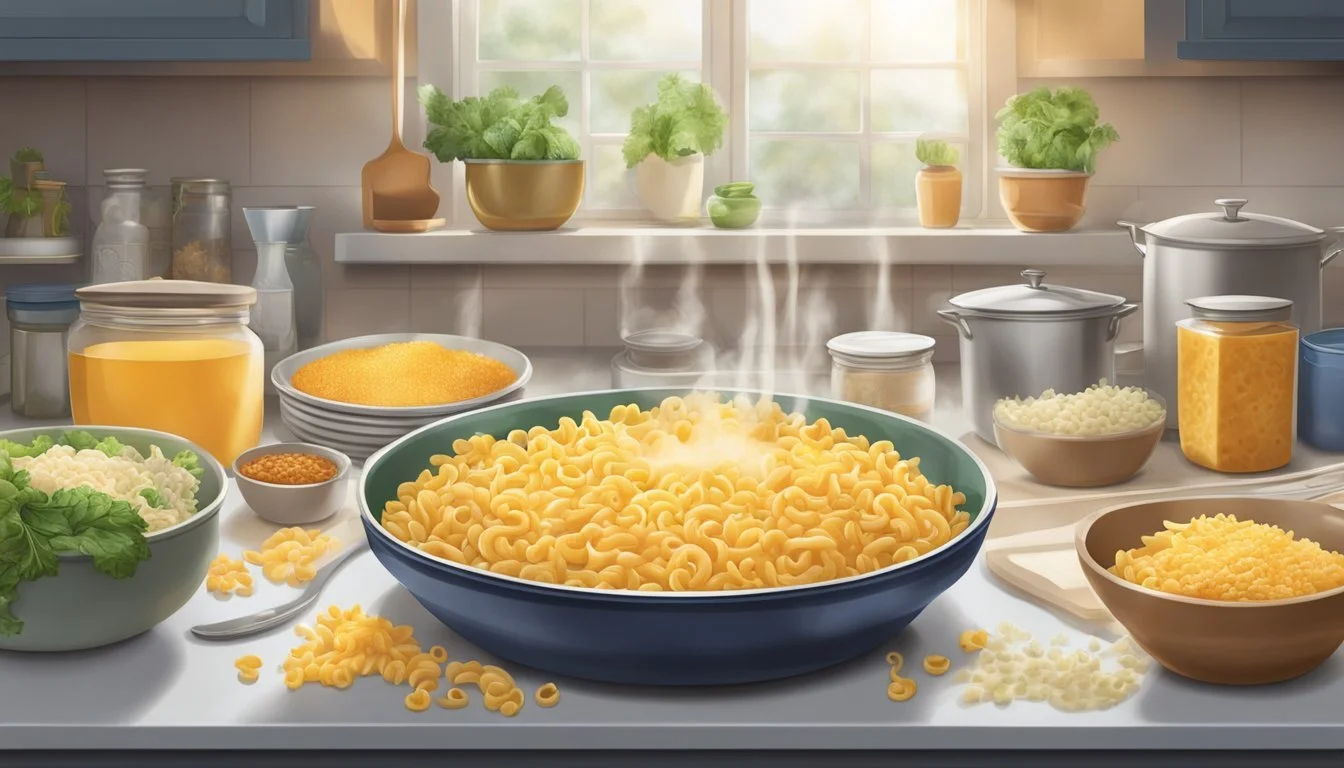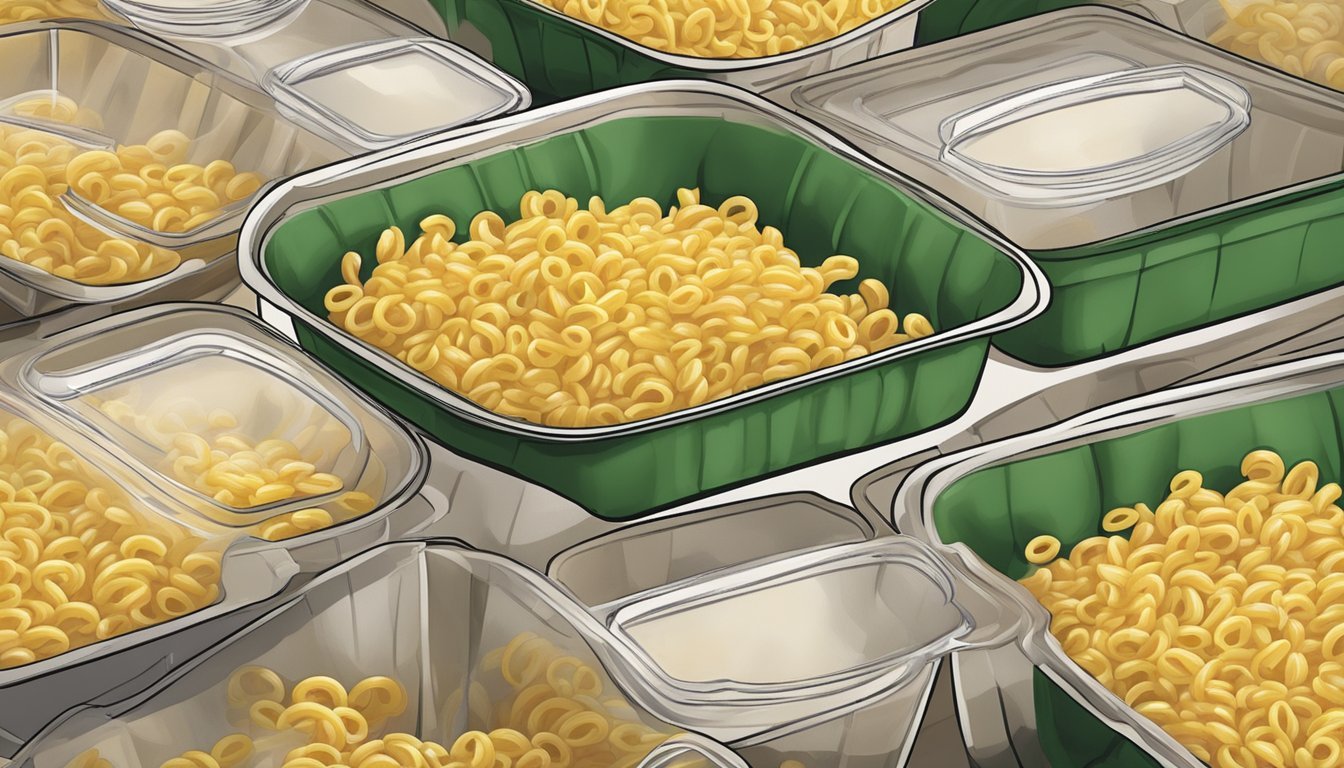How Long Does Banquet Cheesy Macaroni Last?
Storage Tips and Shelf Life Explained
Banquet Cheesy Macaroni is a comforting meal choice for many, blending creamy cheese with tender macaroni. This quick and easy dish often raises questions about storage. When stored properly in an airtight container in the fridge, Banquet Cheesy Macaroni typically lasts about 3-5 days.
For the best quality, ensure the macaroni and cheese cools down completely before refrigeration. This reduces the risk of bacteria growth and ensures the meal remains safe to eat. If you decide to freeze it, you can enjoy Banquet Cheesy Macaroni for up to three months, making it a convenient option for future quick meals.
Understanding how long you can store your Banquet Cheesy Macaroni helps in meal planning and minimizes food waste. Proper storage not only maintains flavor and texture but also ensures that your delicious mac and cheese remains safe to consume.
Understanding Cheesy Macaroni Shelf Life
The shelf life of cheesy macaroni, like Banquet's Cheesy Macaroni, is influenced by various factors, including storage conditions and ingredient quality. Identifying signs of spoilage is crucial to ensure safety and enjoyment.
Factors Affecting Shelf Life
Storage Conditions: Proper storage extends the shelf life. Unopened, packaged cheesy macaroni can last several months. Once opened or cooked, storing it in an airtight container in the refrigerator is essential. Refrigerated, it can last around 3-5 days.
Ingredients: Freshness of cheese and macaroni impacts shelf life. Perishable items like meat or seafood in the dish reduce its lifespan, necessitating consumption within 3 days to avoid rapid spoilage.
Temperature: Keeping cheesy macaroni at consistent, cold temperatures prevents bacterial growth. Temperatures above 40°F can accelerate spoilage, leading to food becoming unsafe faster.
Identifying Spoilage Signs
Appearance: Discoloration, such as dark spots or mold growth, indicates spoilage. Even small patches of mold necessitate discarding the entire dish due to potential contamination spread.
Odor: A sour or off smell suggests bacterial activity. Fresh cheesy macaroni should have a mild, cheesy aroma. Any deviation means it's likely spoiled.
Texture: Slimy or overly dry texture changes are warning signs. Fresh macaroni should be firm yet tender; if it becomes overly soft or mushy, it's time to discard it.
Taste: If taste testing, a sour or bitter flavor indicates spoilage. Always test small amounts first if unsure, but visible or olfactory spoilage signs should already guide disposal before tasting.
Proper Storage for Extended Freshness
To ensure Banquet Cheesy Macaroni remains fresh and flavorful, it's essential to follow proper storage methods. These methods involve proper refrigeration, freezing techniques, and the use of airtight containers.
Refrigeration Best Practices
When refrigerating Banquet Cheesy Macaroni, it's important to use airtight containers. This helps prevent it from absorbing other fridge odors and stops moisture loss. Before refrigerating, let the macaroni cool to prevent condensation, which can make the dish soggy.
Temperature matters. The fridge should be set at or below 40°F (4°C) to inhibit bacterial growth. Consistently low temperatures keep the macaroni safe and extend its shelf life, typically up to 3-5 days. If the macaroni contains perishable ingredients like meat, consume it within 3 days.
Freezing Mac and Cheese
Freezing is a great option to make cheesy macaroni last longer. Cool the macaroni completely before freezing to prevent ice crystal formation. Place the macaroni in an airtight, freezer-safe container or a heavy-duty freezer bag.
Freezing temperature should be 0°F (-18°C) or lower. Properly frozen macaroni can last for about 3-4 months without losing its texture or flavor. When ready to eat, thaw it in the fridge overnight before reheating.
Airtight Containers Usage
Airtight containers play a crucial role in preserving the macaroni's quality. Material matters: Use containers made of glass or BPA-free plastic. Glass containers are less likely to stain and do not absorb odors.
Ensure the lid seals tightly to keep air and moisture out. Label your containers with the storage date. This practice helps keep track of how long the macaroni has been stored and ensures it is consumed while still fresh. Airtight containers also come in various sizes, allowing for portion control and easy reheating.
Freezing and Thawing Procedures
Proper freezing and thawing of Banquet Cheesy Macaroni are essential to maintain its texture and taste. Key aspects include ensuring it freezes evenly and prevents freezer burn.
How to Freeze Macaroni Properly
First, allow the macaroni to cool completely before transferring it to the freezer. Placing hot or warm macaroni in the freezer can cause ice crystals to form, impacting the texture negatively. For best results, use airtight containers or high-quality freezer bags.
Label the containers with contents and date to keep track of storage times. Arranging them flat in the freezer helps to ensure even freezing. Stacking them might save space but can lead to uneven freezing. Use of a baking sheet under the containers can help maintain a flat, even level.
Thawing Techniques
To thaw frozen Banquet Cheesy Macaroni, place it in the refrigerator for several hours or overnight. This method ensures a gradual thaw, preserving texture and flavor. Avoid thawing at room temperature, which can promote bacterial growth.
For quicker thawing, use the microwave. Set it to the defrost setting and check frequently to prevent over-thawing. Stir occasionally to distribute heat evenly. Microwaving in short intervals helps to avoid hot spots and potential texture degradation.
Avoiding Freezer Burn
Preventing freezer burn is crucial for maintaining quality. Ensure that macaroni is sealed tightly in airtight containers or freezer bags. Excess air inside the packaging can lead to freezer burn. Squeeze out as much air as possible before sealing.
Placing the containers in the coldest part of the freezer helps to keep the temperature consistent. Avoid frequent opening of the freezer door as temperature fluctuations can contribute to freezer burn. Regularly check the freezer's temperature settings to ensure they are at optimal freezing temperatures, typically around 0°F (-18°C).
Reheating Methods for Quality Preservation
When reheating Banquet Cheesy Macaroni, it is crucial to preserve its quality, flavor, and texture. Various methods of reheating yield different results, and choosing the right method can enhance your dining experience.
Microwave Reheating
Microwave heating is the fastest way to reheat Banquet Cheesy Macaroni. Place the macaroni in a microwave-safe bowl, preferably glass or microwave-safe plastic. Spread it in an even, thin layer to ensure even heating. Add one tablespoon of milk per cup of macaroni to maintain its creaminess.
Cover the bowl with a microwave-safe lid or microwave-safe wrap to prevent drying out. Heat on medium power in 30-second intervals, stirring after each interval. Check frequently to avoid overheating and maintain the dish's texture and flavor.
Oven-Based Reheating
Oven reheating is ideal for preserving the original quality and texture of Banquet Cheesy Macaroni. Preheat the oven to 350°F (175°C). Transfer the macaroni to an oven-safe baking dish if it’s not already in one. Add a tablespoon of milk per cup of macaroni and stir gently to keep it moist.
Cover the dish with aluminum foil to keep it from drying out while baking. Heat for about 20 minutes, checking and stirring occasionally. If you prefer a crispy top, you can remove the foil in the last five minutes of baking.
Stovetop Reheating
The stovetop method is effective for reheating Banquet Cheesy Macaroni and preserving its creamy texture. Begin by placing the macaroni in a non-stick skillet or saucepan. Add a tablespoon of milk per cup of macaroni to help retain its moisture.
Heat on medium-low heat, stirring constantly to avoid sticking and burning. This method requires continuous attention but prevents the macaroni from drying out. Heat until warm throughout, but avoid overcooking, which can lead to a mushy texture.
By choosing the right method, you can enjoy Banquet Cheesy Macaroni with much of its original quality preserved.
Understanding Use-By Dates
Use-by dates on food packaging provide guidelines for the product's best quality and safety. It's essential to know what these dates mean and how long your Banquet Cheesy Macaroni can last beyond them.
Expiration Date Relevance
Expiration dates, often seen as best-before or use-by dates, indicate the period when the product is at its peak quality. For Banquet Cheesy Macaroni, this means the macaroni and cheese will be freshest and taste best before this date.
Once the date passes, the product does not immediately become unsafe. Banquet Cheesy Macaroni might still be edible, but the texture and flavor could degrade. The printed date is based on optimal storage conditions; always check the packaging for any signs of spoilage.
Safety After the Expiration Date
Post-expiration, it's crucial to assess food safety. Banquet Cheesy Macaroni can be safe to consume for a short period past the date, especially if unopened and stored properly in a cool, dry place. If the packaging remains intact, the mac and cheese inside might still be usable for a few weeks.
Opened packages have a shorter window for safe consumption. Once opened, refrigerate and consume within 3-5 days to avoid foodborne illnesses. Look out for off smells, changes in color or texture, and mold as indicators that the product has gone bad. Proper storage and handling practices can extend the shelf life and maintain food safety.
Health and Nutrition Considerations
When considering Banquet Cheesy Macaroni & Beef, it's important to look at nutrition and explore options for enhancing the health benefits of this comfort food. The meal, known for its creamy and savory taste, is a convenient option but understanding its nutritional content and potential healthier additions is crucial.
Healthy Additions to Mac and Cheese
Adding vegetables can significantly improve the nutritional value of mac and cheese. Broccoli, spinach, or peas can introduce essential vitamins and fiber. Carrots and bell peppers not only add color but also nutrients like vitamin A and C.
Incorporating lean proteins such as grilled chicken or turkey can boost the meal's protein content without adding excessive fat. Substituting part of the cheese with low-fat varieties can also reduce calories and saturated fat.
For those who prefer a creamier texture, using milk alternatives like almond or soy milk can provide a lighter, yet rich consistency. Whole grain pasta offers more fiber and nutrients compared to regular pasta, improving the overall health profile of the meal.
Understanding Comfort Food Nutrition
Banquet Cheesy Macaroni & Beef includes a calorie breakdown of 38% fat, 37% carbs, and 25% protein. This balance suits those needing energy-dense meals but might not be ideal for diets requiring low-fat or low-carb content.
A typical 198 g serving provides around 240 calories. While satisfying, the comfort food nature can include higher sodium levels, primarily from processed cheese and beef. Monitoring intake of additional salts in one's diet is advisable.
Consider using smaller portions to maintain a balanced diet while enjoying comfort foods. Pairing the meal with a fresh salad or steamed vegetables can also help balance the meal's nutritional profile by adding necessary fiber and vitamins.
Creative Ways to Repurpose Leftovers
There are numerous inventive ways to breathe new life into leftover mac and cheese. Whether enhancing it with flavorful add-ins or completely transforming it into new dishes, the possibilities are extensive and delicious.
Mac and Cheese With Add-Ins
One simple method to elevate leftover mac and cheese is by incorporating additional ingredients. Bacon bits add a savory, crispy texture, while grated Parmesan cheese brings an extra layer of richness. Bread crumbs sprinkled on top and baked can create a delightful crust, turning it into an elegant baked dish.
Another tasty option includes mixing in cooked broccoli or peas for added nutrition and a pop of color. For a spicy kick, incorporating jalapeños or a dash of hot sauce can warm up the flavors. This approach keeps the essence of classic mac and cheese while introducing exciting new elements.
Transforming Leftovers Into New Meals
Leftover mac and cheese can also be entirely reimagined. Consider forming the leftovers into small balls, coating them with bread crumbs, and frying them into mac and cheese bites. These bites make for a perfect appetizer or snack.
Making mac and cheese waffles by pressing the mixture into a waffle iron creates a fun and crispy meal. For a hearty option, stir leftovers into a crockpot mac and cheese recipe, enhancing it with additional cheese and seasonings. Another creative transformation is using mac and cheese as a filling for tacos, merging comfort food with classic Mexican flavors.
By transforming the leftovers into unique dishes, these ideas ensure that nothing goes to waste, while introducing new and delicious ways to enjoy an old favorite.
Preventing Bacterial Growth and Mold
To ensure Banquet cheesy macaroni remains safe and fresh, it's crucial to manage storage conditions and recognize the signs of contamination. Proper temperature control and early detection of spoilage can help extend the shelf life.
Understanding the Role of Temperature
Temperature control is critical in preventing bacterial growth. The ideal storage method involves keeping the macaroni refrigerated at temperatures below 40°F (4°C). This significantly slows down bacterial activity.
Room temperature provides an environment where bacteria thrive. Leaving macaroni at room temperature for more than two hours increases the risk of bacterial contamination. To avoid this, always refrigerate the dish promptly.
Freezing is also an option for long-term storage. When frozen, ensure the macaroni is well-sealed to prevent freezer burn. Proper handling during reheating is vital too; thoroughly heat the macaroni to at least 165°F (74°C) to kill potential bacteria.
Signs of Bacterial and Mold Growth
Recognizing spoilage signs is essential to avoid foodborne illnesses. Visible mold is a common indicator, often appearing as green, blue, or black spots. This suggests the presence of mold spores.
Odors can also signal bacterial growth. If the macaroni emits a sour or off-putting smell, it should be discarded. Additionally, changes in texture, such as sliminess or excessive moisture, indicate spoilage.
Consuming spoiled macaroni can lead to serious health risks. Therefore, if any signs of mold or unusual odors are noticed, it's safer to dispose of the food. Regularly checking stored food helps minimize the risks associated with bacterial and mold growth.

